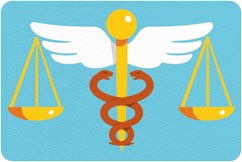AARP Hearing Center
Will You Get an Insurance Subsidy? How Much?
By Kaiser Health News, August 15, 2013 04:17 PM
By Julie Appleby, Senior Correspondent, Kaiser Health News
If you buy your own health insurance, you've no doubt heard that subsidies will be available next year to help pay the premiums.

But will you get a subsidy and how much?
A report from researchers at the Kaiser Family Foundation provides some insight.
Based on their analysis, about 48 percent of adults currently purchasing coverage for themselves will be eligible for subsidies next year - and those subsidies will average $5,548 per family. (KHN is an editorially independent program of the foundation.)
Discussion: The real reason for Republican's opposition to Obamacare
Because that figure is an average, some families will get more and some will receive less when they enroll through new online marketplaces, which open Oct. 1.
"Generally, younger people will get less because the amounts tend to follow the age curve," said Gary Claxton, a vice president at the foundation. "Single buyers will get a smaller credit, in general, than families."
Under the health law, people earning more than 400 percent of the federal poverty level - about $46,000 for a single person or $94,000 for a family of four - won't be eligible for a subsidy at all. Those offered affordable and comprehensive coverage through their employers - or those on government health programs like Medicaid - are also not eligible for a subsidy. The researchers did not include those groups - people eligible for Medicaid or job coverage - in their analysis.
How far will the subsidy go toward buying coverage? That depends on a number of factors, including age, where one lives and what type of policy one selects.
Still, the analysis provides some clues. Using Congressional Budget Office information, the foundation researchers estimated the annual premium for an individual 40-year-old will average $3,857 nationally. Based on that estimate, the analysis pegged the average cost of family coverage for those who have coverage now and are expected to buy next year at $8,250.
So, the estimated average subsidy of $5,548 would cover 67 percent of the cost of the average family plan.
Individuals and families could choose lower premium plans, but in no case will the subsidy be greater than the amount of the premium.
Subsidies, provided as tax credits, will be given on a sliding scale based on household income and are less generous as income rises. People who get a subsidy must still contribute to their health insurance premiums. For example, those on the lowest end of the income scale will pay 2 percent of their household income toward the premium, while those at the higher end will pay 9.5 percent. The subsidy makes up the difference between what the family pays and the price of the second lowest cost silver plan available. Bronze, silver, gold and platinum plans will be offered.
"For the vast majority of families, $5,000 is incredibly helpful," said Sabrina Corlette, project director at the Health Policy Institute at Georgetown University, which was not involved with the study. But "that $5,000 is not reflective of what an individual family might get. Unfortunately, the generosity of subsidies drops off pretty dramatically after about 250 percent of the federal poverty level." (About $28,000 for an individual.)
Also of Interest
- Do the Rich Benefit from Medicaid?
- New Health Care Coverage Gap
- Join AARP: Savings, resources and news for your well-being
See the AARP home page for deals, savings tips, trivia and more































































